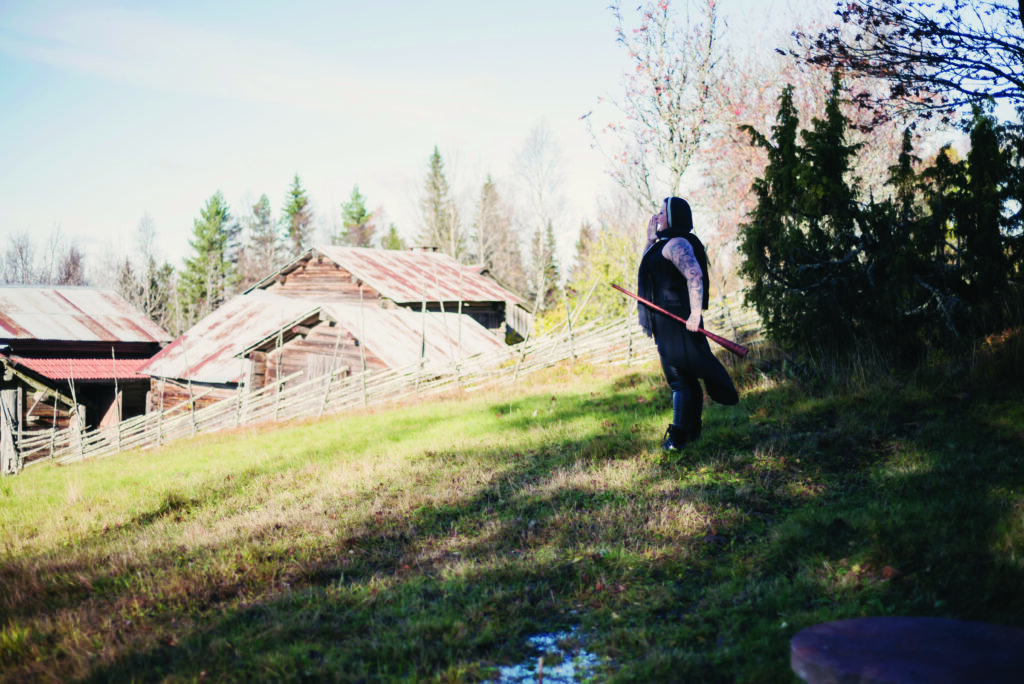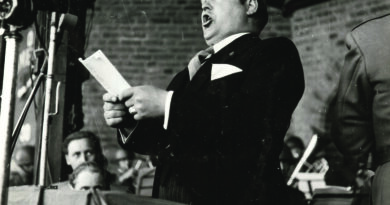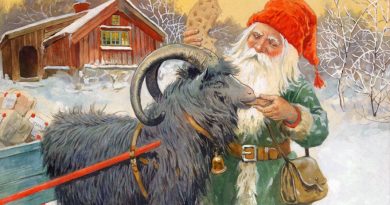Kulning – The Call of the North
Kulning, an ancient form of Nordic herd-calling, is experiencing a pop culture revival of international dimensions, but it was in the old fäbodar of Dalarna that it all started.
In 2016, Swedish artist Jonna Jinton posted a video of herself on YouTube practicing the ancient Scandinavian singing tradition. Her piercing call reverberated around the world and soon her video had over eight million views. The eerie, melancholic, almost supernatural sound of the North seemed to awaken in others a wide-spread longing to reconnect with nature and the traditions of the past.
Fäbodar – Remote Summer Cottages
Ever since medieval times, the sound of women’s voices echo across Sweden’s remote forests and mountain pastures as dusk approaches after a long summer’s day.
In the olden days, fäbodar – remote cottages or chalets used as summer farms, were common in Dalarna and other northern Swedish provinces such as Hälsingland, Härjedalen, Jämtland, Värmland, and Ångermanland, as well as in parts of Norway. In these regions, the soil is so lean it can’t produce enough for both humans and animals to live off. Until the early 1900s, it was therefore mandatory to move the herds else-where to graze in the summer. On the agreed date, each village would transfer their cattle to the fäbod with hundreds of cows, goats, and sheep making their way up to the mountains.
Village women and children would accompany the animals and spend the summer herding the family’s cattle while also making sustainable milk products for the coming winter. It was hard work, but created a sense of freedom as the men, who called the shots during the remainder of the year, stayed behind in the village. Nordic herding cultures are unique in that the shepherds were mainly women.


At the fäbod, the women were alone and could decide for themselves how to organize their tasks and existence. Duties included keeping the herd safe from predators, milking the cows and goats, maintaining the buildings, as well as making cheese and other milk products. There was no room for mistakes, or the family would starve in wintertime. Still, in archival recordings, many of the women who spent their summers at these remote locations confess feeling overwhelmed by a sense of independence and freedom that far outweighed the burden of the responsibility, the strenuous labor, or any fear of being left alone.
Calling the Animals
To communicate with their animals, they developed a special high-pitched singing technique to amplify the power of their voices across the mountainous landscape, resulting in a haunting cry that could travel over great distances. The calls served the purpose of keeping the herds together and calling the cows, goats and sheep home to the fäbod from the far away pastures where they spent their days grazing.
The term kulning (and the verb to kula) originates in Dalarna and has become the most famous name for these herding calls. The term kauking or kaukning, common in Jämtland and Härjedalen, comes from the Norwegian word kauke, which means “to call”. The herders also used kulning to communicate with one another or to scare off predators such as wolves or bears. For example, when an animal had gone astray and had to be located, a woman on one farm might cry out using a particular melody to let anyone within earshot know. As soon as the animal had been located, a far-off neighbor would convey the news back in song.
The powerful vocal technique enables the sound to carry for several kilometers. It has a melancholic and haunting feel to it, adding to its allure and magic, making it distinctly different from yodeling, another singing style developed for long-distance sound propagation. The volume of kulning is so strong that it cannot be performed indoors. It can reach up to 125 decibels, which is dangerously loud for someone standing next to the source. For comparison, a normal conversation is about 60 dB while anything over 120 dB can cause immediate damage to the ears. Kulning can be heard by a herd more than five kilometers away, but what prompts the animals to adhere to the call remains a mystery.

With the agricultural reforms of the early 1900s, life improved for many farmers who were now able to feed both humans and animals off their harvests and village pastures. The need to move herds to the mountain pastures decreased. Come the mid-1900s, milk production was industrialized and an increasing number of fäbodvallar (mountain pastures) were abandoned. In the mid-nineteenth century, there were more than 3,000 fäbodar in Sweden, but from the 1960s to the 1980s, remote summertime herding faded from practice. Today, just over 200 remain in operations as modern interpretations of the traditional fäbod culture.
Even though the practice waned, the music of the female shepherds has not been silenced. It remains an intrinsic part of Nordic culture, but as women’s place in society has shifted, so has the platforms and contexts for these sounds.
Frozen
When snow queen Elsa discovers her inner strength in the animated movie Frozen it is kulning we hear. Disney included kulning in both their first and their second Frozen movies to convey the sounds of the North. Portraying Elsa’s inner voice is Norwegian-Swedish composer and vocalist Christine Hals, who spent her childhood summers at her father’s farm in northern Norway using the ancient herding calls to lure the goats and the sheep back home for the night. “Disney loved that not only did I know how to kula but I had actually learned it the real way,” she tells Swedish television.
Composed or improvised kulning can also be heard in Scandinavian folk music, at festivals and outdoor concerts. Some practitioners of this vocal expression learned it from their grandmothers on the farm in rural Sweden. Others are highly educated singers who studied it at the Royal College of Music. No matter the origin of their skill, the important part is that they are keeping this spellbinding art of communicating with nature alive.






